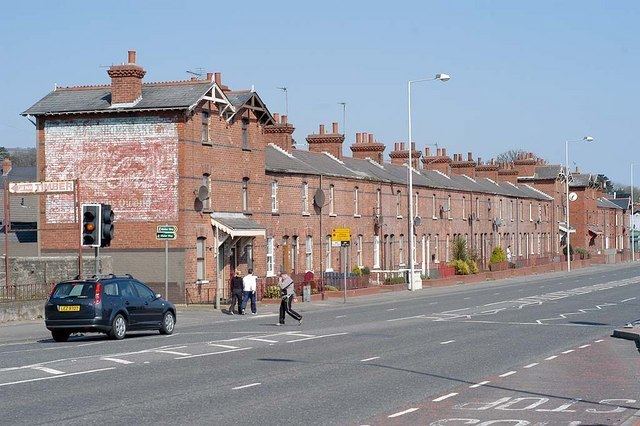Country Northern Ireland Barony First recorded 1604 Local time Sunday 5:08 AM Settlement Newtownabbey | County Antrim Plantation grant Private plantation Settlements Newtownabbey Province Ulster Civil parish Carnmoney | |
 | ||
Weather 6°C, Wind W at 11 km/h, 96% Humidity | ||
White Abbey is a townland (of 406 acres) in Belfast, Northern Ireland. The shoreline village spelt Whiteabbey, was established within the townland of White Abbey in the late 19th century. Today, it is a location within the borough of Newtownabbey. White Abbey is part of the civil parish of Carnmoney and the historic barony of Belfast Lower.
Contents
- Map of Whiteabbey Newtownabbey UK
- History
- Local facilities
- Local schools and education
- Local churches
- Transport
- References
Map of Whiteabbey, Newtownabbey, UK
History
White Abbey's name is derived from a Roman Catholic Premonstratensian abbey which existed in the area in the Medieval period, the monks of which are said to have worn white robes. All traces of the abbey are now gone although the site, in a field beside the grounds of Whiteabbey Hospital at Doagh Road, remains undeveloped. It can be viewed from the adjacent Abbots Cross Garden Village. The site of the Premonstratensian Abbey is designated as a Scheduled Historic Monument at grid ref: J3497 8198.
In the first half of the 19th century, the village of Whiteabbey was home to a large bleach works and was an important landing site for coal shipments bound for Belfast. Remnants of the old pier can still be seen in the sea. The importance of Whiteabbey declined after the channel into Belfast harbour was widened and straightened allowing larger ships to reach the city directly.
Abbeylands, a two storey Victorian house in Whiteabbey, owned by Sir Hugh McCalmont, was set on fire by Suffragettes in 1914 causing £20,000 of damage. Unionist leader, Edward Carson, had declared against votes for women, meanwhile his Ulster Volunteer Force (UVF) had been drilling troops at Abbeylands House. In protest the Suffragettes burnt the building to the ground on 27 March 1914, complaining that they were being imprisoned while the UVF were gun running and preparing for civil war.
In 1952, one of Northern Ireland's most controversial murders took place in Whiteabbey when Patricia Curran, the 19-year-old daughter of prominent Judge Ulster Unionist politician Sir Lancelot Curran, was found stabbed near her home, Glen House.
Whiteabbey, together with Whitewell, Whitehouse, Jordanstown, Monkstown, Carnmoney and Glengormley, were the seven villages that formed Newtownabbey when it gained district council status on 1 April 1958.
Local facilities
The Bureau Bar in Whiteabbey is a popular place for music at week ends and has a restaurant.
Local schools and education
Local churches
Transport
The area is served by Whiteabbey railway station on the Belfast to Larne line. The station opened in April 1848. Although it lies outside Belfast the area is also served by the Translink Metro service.
